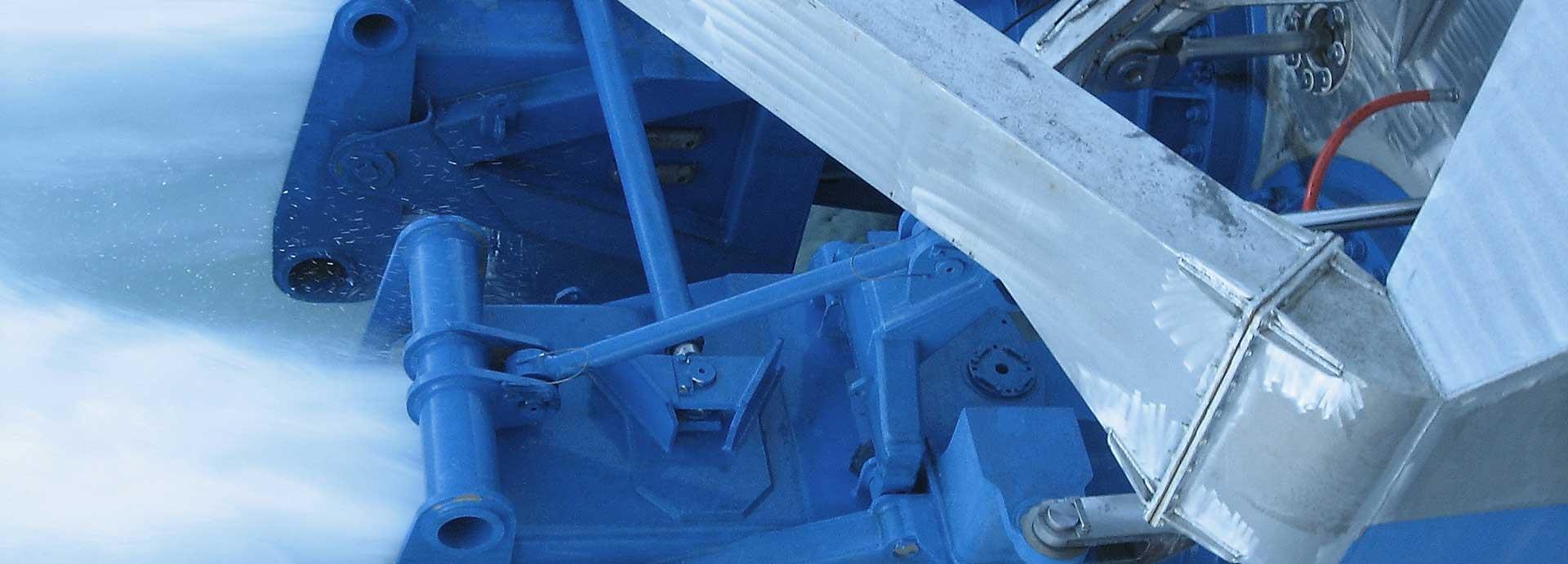

After working closely together for 30 years, the relationship between Wärtsilä and Australian boat manufacturer Incat is “almost synergistic”. Over three decades, Incat’s fast ferries have kept getting larger and faster and Wärtsilä has had to build bigger and more efficient waterjets to make them work.
Close communication between the two teams is vital for Wärtsilä to be able to understand Incat’s technical requirements. To date, Wärtsilä has delivered 174 modular waterjets to Incat’s Tasmanian shipyard, including the waterjets for two new fast ferries under construction this year. One of the vessels is being prepared for the Malta-based Virtu Ferries and the other is for the Spanish company Naviera Armas. Both will be fitted with the Wärtsilä LJX 1500SRI, which has become the waterjet of choice in the global fast ferry market.
“We work closely with Wärtsilä on the introduction of each new waterjet model and they appreciate the expert technical feedback from our shipyards and ship operators,” says Incat chairman Robert Clifford.
“We need to have absolute trust in the reliability of the Wärtsilä waterjets because they take the greatest stress during the propulsion of the ship, along with the entire stern tube area. When our customers, the ferry operators, have their peak tourism seasons they have to be sure of trouble-free operations,” he adds.
Technical challenges
The technical challenge for Wärtsilä’s design teams, Clifford says, has been to create waterjets that are strong enough to withstand the propulsive stresses, but that are also as lightweight as possible. The lighter they are, the more they improve the performance and fuel economic efficiency of the ship, he says. The jets also have to be much bigger than they used to be. The first time Incat deployed waterjets was in 1990 on a 74-metre craft, whereas the largest vessels today measure between 109 and 112 metres.
Wärtsilä specialises in making larger waterjets, according to Jeroen Vedder, the Sales Manager for Waterjets at Wärtsilä Marine Solutions. He says the company manufactures jets starting from a size 410 mm up to a size 2350mm.
“Our waterjets are ideal for one-off projects with specific requirements, such as Incat’s fast ferries,” he says.
World record breaker
In 2012, Wärtsilä’s waterjets played an important role in helping Incat break a world speed record. Wärtsilä supplied two LJX1720SR axial waterjets for Incat’s 99-metre catamaran Francisco which operates between Uruguay and Argentina for ferry operator Buquebus.
In trials, the Francisco reached a lightship speed of 58.1 knots (107.6 km/h), making it the world’s fastest high-speed ferry, as well as the first vessel of its kind to use liquefied natural gas (LNG) as fuel. Incat’s Robert Clifford says the ferry’s astonishing operating speed of 50 knots in crossing the River Plate allows it to compete favourably with air travel between the two countries.
Wärtsilä will supply four LJX1500SRI waterjets and a Protouch control system to Incat’s Tasmanian shipyard in April for the 110-metre Virtu Ferry, which will travel between Malta and Sicily. Incat plans to deliver the ferry at the end of 2018 when it will be the largest high-speed catamaran in the Mediterranean Sea, providing 90-minute crossings for 900 passengers and 167 cars at a service speed of up to 38 knots.
Meanwhile, Wärtsilä will supply a further four LJX 1500SRI waterjets and a Lipstronic control system for a 109-metre high-speed ferry being built for Naviera Armas. It will be the third high-speed catamaran in the company’s fleet and all incorporate Wärtsilä waterjets. Without Wärtsilä’s waterjets, these ferries could not attain such high speeds.
Engineering an advantage
After Wärtsilä has delivered the waterjets to Incat’s shipyard in Tasmania, the close contacts will continue between the two teams, says Clifford. “Wärtsilä’s engineers continue to be involved at the shipyard for commissioning the waterjets and then for our initial sea trials. They’re also present at the first builder’s trials, as well as the official sea trials required by regulatory authorities,” he says.
In the future, the relationship with Incat could get even closer. Incat has not yet installed Wärtsilä’s main engines in a vessel, but is in discussions and reviewing options for various sizes. “We’re especially interested in dual-fuel engines as the interest in LNG increases. The size and weight of engines can be as important a factor as the power, given that we are installing into relatively small engine rooms,” he says.
The performance of the Wärtsilä waterjets is also valued for other types of vessels. In the navy, for example, many ships use the waterjets. The absence of parts below the waterline allows the boat to operate in shallow waters.

